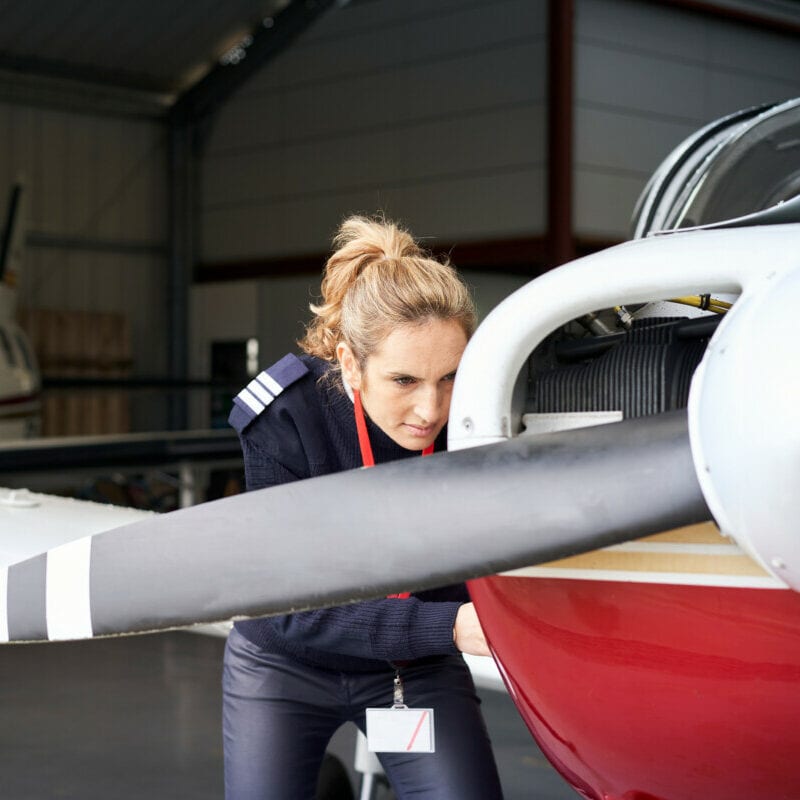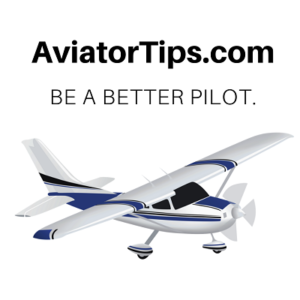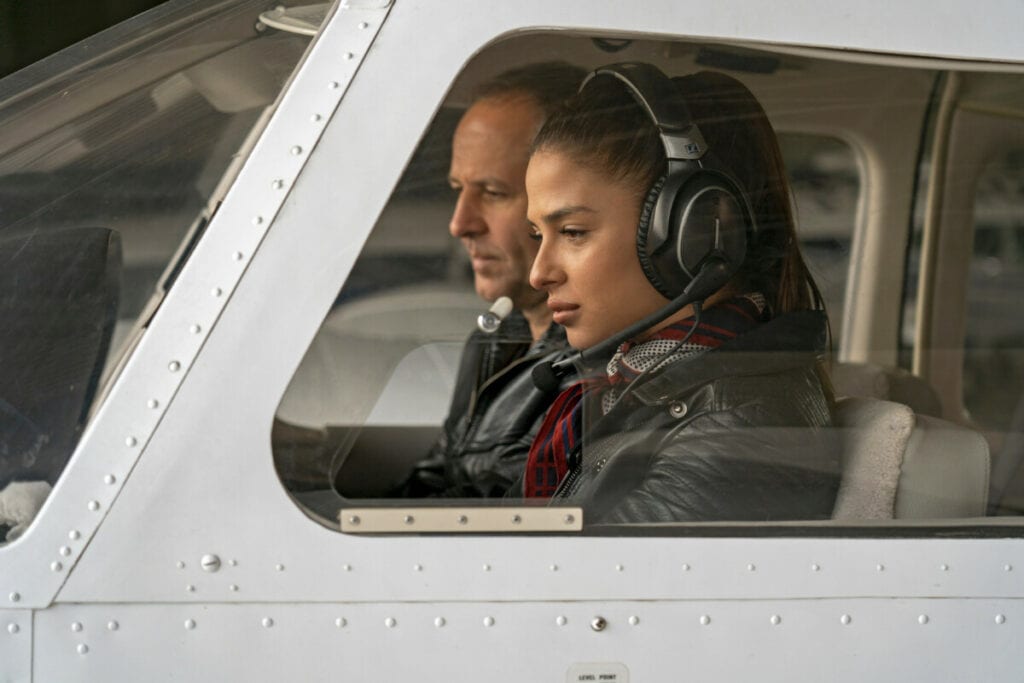When you are completing a Private Pilot flight training program, you need to fly for at least 40 hours and possibly as many as 100 hours, which means you need to fly often. If you intend to get a Commercial Pilot certificate, you’ll need many more hours (at least 250). So, should you buy a plane while training to fly?
Whether or not you should buy a plane for flight training depends on your individual situation, budget, and goals. It may be worth buying a plane for training if you’re committed to a substantial amount of flying. Otherwise, renting a plane initially and then deciding whether or not to invest in one later may be a better plan.
Now that we know that it may be a good idea to buy a plane while learning to fly, let’s go over the pros and cons of buying a plane and the costs of owning vs. renting a plane.
Buying a Plane for Flight Training
It almost always is a better financial decision to buy your plane rather than rent it. If you have your own airplane, it will be available to you whenever you need to fly, and it will most likely be in better condition than those that can be rented at a flight school. As you know, buying an aircraft is a big investment, so if you intend to buy an aircraft for flight training, be sure to buy one that you will want to continue using after your training has been completed.
There has been an increased demand for personal aircraft since the Covid-19 pandemic began, which means that it might be hard for you to find the type of plane you want to fly. However, since there is a high demand but low supply of airplanes, if you purchase an airplane, it will likely increase in value over time if you take care of it. Given the limited availability, it may even make sense to buy a plane, then sell it when you’ve completed your training.
The following video talks about why it was worth it for the creator of the video to purchase rather than rent a plane.
One thing to consider, however, is how much you will be flying. A good rule of thumb is that if you don’t fly at least 100 hours per year, it’s probably cheaper in the long run to rent.
Renting a Plane for Flight Training
If you don’t have the financial means to buy a plane, renting could be a good option, but the costs of renting add up in the end. However, there are a few benefits to renting a plane for flight training.
Read also: 11 Tips For Learning To Fly When You’re Broke
If you are simply renting a plane, you are not responsible for maintaining it. The rental company or flight school that you are renting the plane from is responsible for keeping the planes maintained, so they will take care of all required maintenance and repairs.
You also don’t have to worry about having access to a hangar to store your plane. The rental company will store the plane when it’s not in use.
It may be a good idea to rent for a little while before you decide to buy your own plane. Renting a plane allows you to try out and get to know how plane models work. However, this varies depending on the planes available at the rental company. If you aren’t “checked out” to fly a certain model, the rental company will have an instructor take you up and sign you off on the specific model.
Pros and Cons of Buying a Plane
Pros
- Availability: When you own your own plane, you don’t have to worry about reserving one when you want to fly. You will also be able to use the same plane every time you fly.
- Value: If you buy your own aircraft, it will likely increase in value.
- Cost-Effectiveness: Depending on the frequency of use, owning a plane for training may be more cost-effective than renting a plane in the long run.
- Personalization: Buying a plane for training allows you to customize it to your needs and preferences.
- Flexibility: Having your own aircraft gives you flexibility because you don’t have to schedule a time or hope for an available aircraft at a rental company. You can just hop into your aircraft and fly whenever you want or need to.
Cons
- High Initial Cost: Buying a plane is a significant investment, and the initial cost can be prohibitive for many people.
- Maintenance: When you own an aircraft, you are responsible for the maintenance and the cost of that maintenance. Aircraft owners must reserve a time for their plane to be maintained by an A&P (Airframe and Powerplant) mechanic. Aircraft are also required to have annual inspections in order to maintain their Airworthiness Certificates. This means that you can’t put off many repairs if you want to be able to still fly the airplane.
- Risk: As with any investment, there is always a risk that the plane may depreciate in value or suffer damage or accidents, which can be costly to repair.
- Insurance: Insurance is a good thing, but it makes owning an aircraft more costly. There are several different types of aviation insurance that you will have to have if you own a plane such as in-flight insurance, public liability insurance, passenger insurance, and combined single limit and aircraft hull insurance.
- Taxes: You will have to pay several different taxes if you own an aircraft. These taxes usually include sales tax, use tax, and personal property tax.
- Storage: If you own an aircraft, you have to have a place to store it. The cost to rent space at a hangar varies depending on the hangar you use. In addition, hangars are hard to come by at many airports. Many have long waiting lists that can take many months or even years.

Costs of Renting vs. Buying
Renting Costs
The cost to rent a plane varies on the location and model of the plane. However, we have listed the general costs of renting a plane below.
- Basic 2-Seat Trainer: $90-120 per hour
- 4-Seat Trainer (Older Model): $120-170 per hour
- 4-Seat Trainer (Newer Model): $125-179 per hour
- 6-Seat Single-Engine: $220-384 per hour
- 6 to 8-Seat Multi-Engine: $290-479 per hour
If you’re renting a plane for flight school, you most likely will only need to rent the basic two-seat trainer plane. It’s best to choose the cheapest option because you will have to rent this plane multiple times, and the cost of renting add up quickly.
You should also keep in mind that due to high fuel prices, many operators charge surcharges on top of the rental fees. These can be an additional $10-20 per hour.
#ProTip
Buying Costs
The cost to buy and own a plane varies on the model and size of the plane. There are three general types of planes to look at when considering buying a plane.
- Ultralight Aircraft: $8,000- $15,000
- Single-Engine Planes: $15,000- $100,000
- Multi-Engine Planes: $75,000- $300,000
As you can see, the price for an aircraft varies quite a bit. Bear in mind, that these prices represent older aircraft that will require more maintenance. New aircraft are exponentially more expensive. While Ultralight Aircraft are the least expensive of these groups, they probably are not suitable for the training you will need. It’s recommended that you stick with the least expensive option that will fit your mission for your first plane. You can always sell it and move up into a larger model as you gain experience.
Final Thoughts
In the end, whether or not you should buy a plane for flight training depends on your individual situation, budget, and goals. It may very well make sense for your circumstances. However, you need to make sure that the amount you will fly will justify the commitment. It may be worth considering renting a plane for training initially and then deciding whether or not to invest in one later.
Recent Posts
FAA MOSAIC Final Rule: What Pilots, Manufacturers, and the Aviation Community Need to Know
Learn how the FAA’s MOSAIC final rule revolutionizes Light-Sport Aircraft certification, expands Sport Pilot privileges, and reshapes general aviation. See what’s changing, when it takes effect,...
Student Pilot Insurance: Essential Coverage for Aspiring Flyers
Discover how student pilot insurance can protect your flying dreams. Get expert tips and coverage options to ensure your safety and peace of mind.


